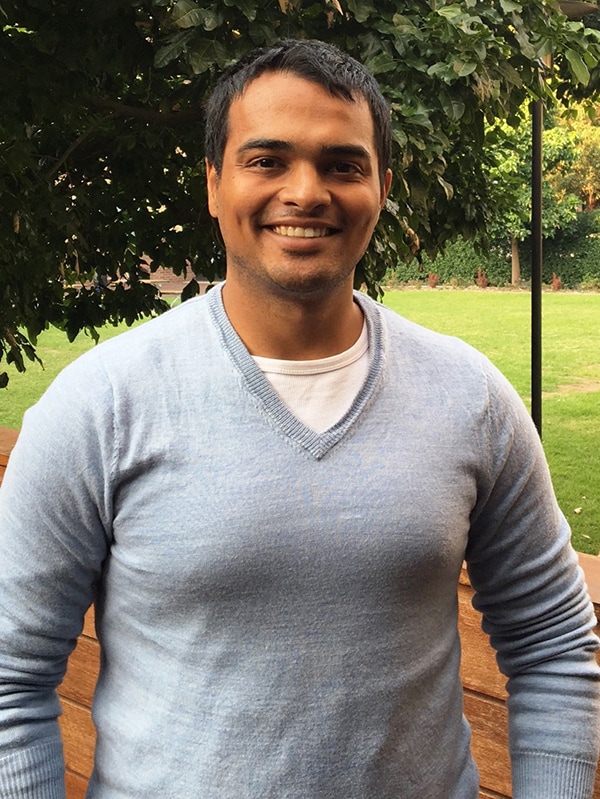
Making life easier for Australian farmers
Suchet Bargoti is using cameras and mapping software to make information gathering in farms much more efficient, precise and cost-effective that the old handpicked method.
Suchet Bargoti’s research in field robotics and machine learning has seen him develop specialised software and algorithms which automatically analyse fruit at the individual tree level using sensors and cameras. From this, information rich crop inventories can be provided to farmers, detailing the fruit load and distribution on every tree. Farmers can then use this information to optimise their agricultural practices, for example controlling the rate of pesticide spray per-tree in order to avoid wastage.
“Farmers can simply set up cameras on their tractors while they’re working and this system will automatically gather information about every piece of fruit. This high-resolution data can then be analysed to help the farmer decide how much fertilizer to use, which irrigation methods to prioritise and how to manage harvesting logistics,” Suchet explains.
“Farmers no longer have to rely on manual processes, but can now leave the hard work to software to detect problems and notify them.”

Suchet’s work differs to other research in this field as his model applies multiple types of sensing modalities to build a crop inventory in real-time. The proposed system is applicable to many types of fruit, rather than focusing on just individual fruit, as has often been done before.
While undertaking his PhD research with the Australian Centre for Field Robotics (ACFR), Suchet worked on operations spanning a wide range of farms across Australia. The significance of the work was clear early on, when an apple grower discovered a surprising variation in the crop yield due to data gathered by ACFR. The grower immediately took action and changed his planting strategy to address the variation.
Applying robotics to agriculture not only offers benefits while the fruit is fully grown, but analysis can also be undertaken much earlier on during the flowering season, allowing the farmer to pre-sell produce based on a yield forecast.
While Suchet was completing his PhD, which he submitted in February, he started working with Abyss Solutions, a robotics company that combines Remotely Operated underwater Vehicles (ROVs) with data analytics to provide a safer, easier and more accurate means to inspect and assess underwater environments like dams, ships or ports.
Last year, the Abyss team worked on a project with Sydney Water to map the Alexandra canal in Sydney. They used an unmanned boat to collect image data along the river which enabled Sydney Water to identify the specific damages along the canal, rather than having to fix the entire canal.
Suchet is now working full-time for Abyss as their Chief Technology Officer and is delighted to have the opportunity. “Abyss is a fun, exciting and fast paced place to work at; I love it.”
“Coming out of my PhD I wanted to keep working with technology, while also developing high-level skills like strategy and business development.”
“I’m excited about where the future is heading in the world of robotics and machine learning to transform what was previously manual work into clever automated systems,” he said.
Related articles
School of Civil Engineering announce new Head of School
The School of Civil Engineering welcomes Professor Brian Uy as the new Head School, having held leadership positions at the University of NSW, the University of Western Sydney and the University of Wollongong.

Research to learn how smart tech will transform city governance
The University of Sydney has received an Australian Research Council grant to investigate the way smart technologies will change how Australian cities are governed.
Diving for DNA: 2000-year-old skeleton discovered in shipwreck
Archaeologists have found a human skeleton in Greece thanks to marine robotics mapping work done by the Australian Centre for Field Robotics. They are the first remains to be recovered since the introduction of DNA studies.